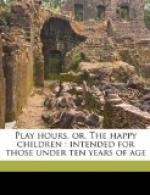|
This section contains 7,725 words (approx. 26 pages at 300 words per page) |

|
SOURCE: Titus, Mary. “Murdering the Lesbian: Lillian Hellman's The Children's Hour.” Tulsa Studies in Women's Literature 10, no. 2 (fall 1991): 215-32.
In the following essay, Titus discusses the ways The Children's Hour reflected changing thoughts about women's sexuality in the early to mid-twentieth century.
American theaters in the late 1920s and early 1930s presented several more or less controversial plays exploring the dangerous attraction of lesbianism, particularly to young women in all-female environments. Between 1926 and 1933, for example, New York saw productions of The Captive (1926), Winter Bound (1928), and Girls in Uniform (1933).1 Certainly the best known of such works is Lillian Hellman's The Children's Hour (1934). Hellman's play, like the other explorations of lesbianism, both reflects and participates in the cultural revision of women's sexuality that occurred in the early twentieth century. Read in historical and biographical contexts, The Children's Hour emerges as a crucial document, for it not only provides insight into...
|
This section contains 7,725 words (approx. 26 pages at 300 words per page) |

|


